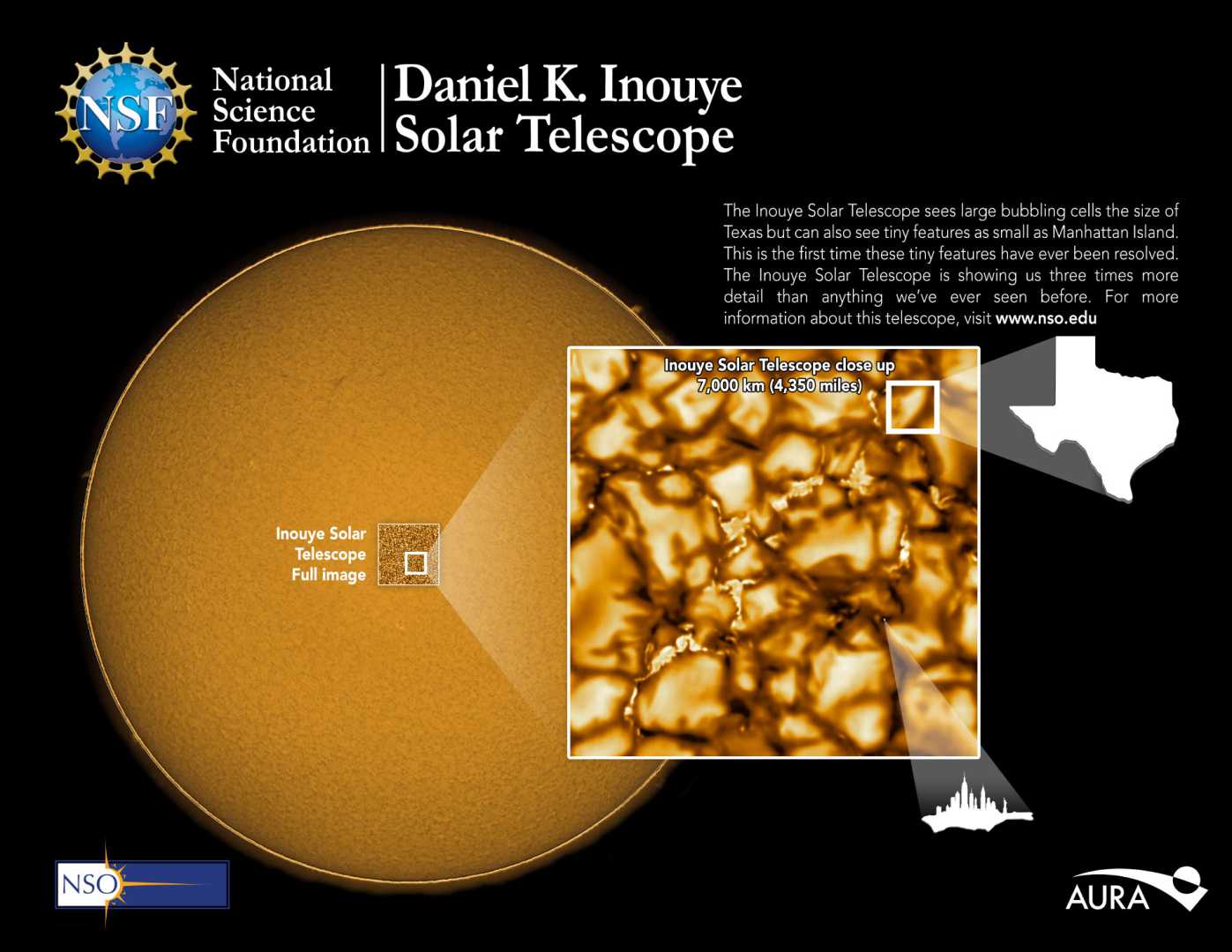News
U.S. Solar Telescope Captures First Images with New Filter

Maui, Hawaii — The U.S. National Science Foundation‘s Daniel K. Inouye Solar Telescope, the world’s most powerful solar telescope, achieved a significant milestone by capturing its first images using a new instrument called the Visible Tunable Filter (VTF) on April 24, 2025. Located near the summit of Haleakalā, the telescope successfully produced solar images that show promising details about the Sun’s activity.
The VTF, designed and built by the Institute for Solar Physics in Freiburg, Germany, is the largest imaging spectro-polarimeter ever created, allowing scientists to conduct high-resolution observations of the Sun. After its arrival in 2024, the KIS team worked closely with National Solar Observatory (NSO) scientists to integrate the VTF into the Inouye Solar Telescope’s existing system, which includes four other advanced instruments.
The first light image revealed a cluster of sunspots, areas on the Sun’s surface characterized by intense magnetic activity, each approximately the size of or larger than the contiguous United States. These sunspots can lead to solar flares and coronal mass ejections, events that significantly impact communications and technologies on Earth.
Dr. Thomas Kentischer, the VTF’s co-principal investigator and architect of its design, expressed satisfaction with the instrument’s successful implementation. “After all these years of work, VTF is a great success,” he said. “I hope this instrument will become a powerful tool for scientists to answer outstanding questions on solar physics.”
The VTF’s capabilities include capturing two-dimensional images of the Sun at specific wavelengths, utilizing a technique known as polarimetry. This method helps scientists understand the Solar Magnetic Field by measuring how light waves oscillate. The VTF can take hundreds of images in seconds, which combine to create a three-dimensional view of solar structures.
Dr. Matthias Schubert of KIS highlighted the importance of the VTF, stating, “The significance of the technological achievement is such that one could easily argue the VTF is the Inouye Solar Telescope’s heart, and it is finally beating at its forever place.” Meanwhile, Dr. Stacey Sueoka, a senior optical engineer at NSO, emphasized the achievement as a result of months of dedication from multiple teams across continents.
The NSF notes that high-resolution observations of the Sun are vital for predicting severe space weather events, which can disrupt communications and infrastructure on Earth. “The NSF Inouye Solar Telescope puts the U.S. at the forefront of worldwide efforts to produce high-resolution solar observations,” remarked Carrie Black, NSF program director for the NSO.
The VTF is expected to be fully operational by 2026, advancing the understanding of solar storms and contributing to reliable predictions. With this groundbreaking filter, scientists hope to unlock deeper insights into the Sun’s behavior and its effects on the Earth.












